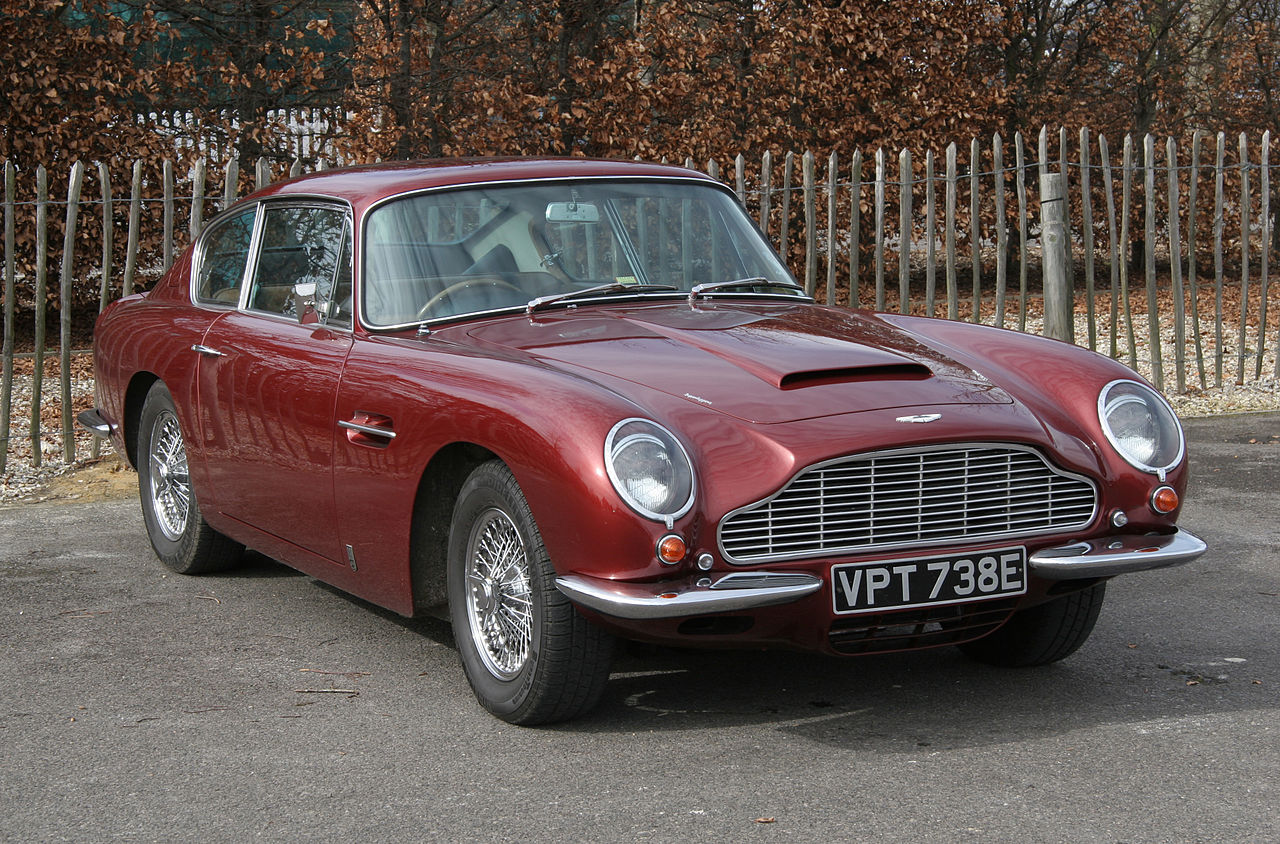| Aston Martin DB6 | |
|---|---|

|
|
| 1967 Aston Martin DB6 MkI | |
| Brian Snelson, CC BY 2.0, via Wikimedia Commons | |
| Manufacturer | Aston Martin |
| Production | 1965–1970 1,788 produced |
| Body and chassis | |
| Class | Grand tourer |
| Body style | DB6 2-door coupé 2+2 Volante four-seat convertible |
| Layout | FR layout |
| Powertrain | |
| Engine | DOHC Straight six, 3995 cc, 282 bhp @ 5500 rpm 280 lbs-ft @ 4500 rpm |
| Transmission | ZF 5-speed overdrive manual or Borg-Warner 3-speed automatic |
| Dimensions | |
| Wheelbase | 101.5 in (2,578 mm)[1] |
| Length | 182 in (4,623 mm)[2] |
| Width | 66 in (1,676 mm) |
| Height | 53.5 in (1,359 mm) |
| Curb weight | 3,250 lb (1,474 kg)[3] |
| Chronology | |
| Predecessor | Aston Martin DB5 |
| Successor | Aston Martin DBS |
Aston Martin DB6
The Aston Martin DB6 is a grand tourer made by British car manufacturer Aston Martin and was produced from September 1965 to January 1971.
The DB6 succeeded the Aston Martin DB5 and featured improved aerodynamics and specification over its predecessor.
History and design
After Aston Martin rejected proposals for a replacement for its DB5 from the original DB4 Touring of Milan, the decision was made to focus on their own development car, registered 4 YMC. Wind tunnel testing, begun in February 1965, showed development was necessary to counteract a tendency toward aerodynamic lift [a result of the fastback styling] causing reduced rear-wheel traction at high speed.[4] Final development phases relied upon DB5 chassis, suitably lengthened and titled MP 219, with rear lip-spoiler and abbreviated Kammback tail Aston Martin previously incorporated in sports-racing prototypes. The decision was made to produce MP 219 as the Aston Martin DB6 although the prototype de Dion rear axle was rejected, Aston's soldiering on with its live-axle configuration reducing time to market, cost and complexity.
Introduced at the 1965 London Motor Show, the DB6 was already a dated design[5] notable as the first model engineered following a factory relocation from Feltham to Newport Pagnell. The DB6 has a resemblance to its predecessor, the DB5; with the most noticeable differences being its wheelbase, side profile, split front and rear bumpers and rear panels incorporating the Kammback tail rear end. The tail, combined with the relocated rear-axle and the 3.75-inch (95 mm) lengthened wheelbase, provide more stability at high speed. Though fashionable — the rear-end Kamm-styled design was similar to the Ferrari 250 — it did not prove popular with conservative, tradition oriented Aston clientele when the DB6 was introduced. Performance was satisfactory: road-tests of the day observed top speed of the Vantage model between 145 mph (233 km/h) to 148 mph (238 km/h), with John Bolster aboard a Vantage spec DB6 reaching a two-way average of 152 mph (245 km/h).[6]
The DB6 continued with then high-tech Armstrong Selectaride cockpit-adjustable rear shock absorbers as available on the DB5.[7] Other highlights include adopting front-door quarter windows, an oil-cooler air scoop low on the front valance, quarter-bumpers at each corner, revised tail-lamp clusters; additionally the spoiler affected the overall proportions of the DB6, with an increase in length by approximately two inches.
Other notable changes:














